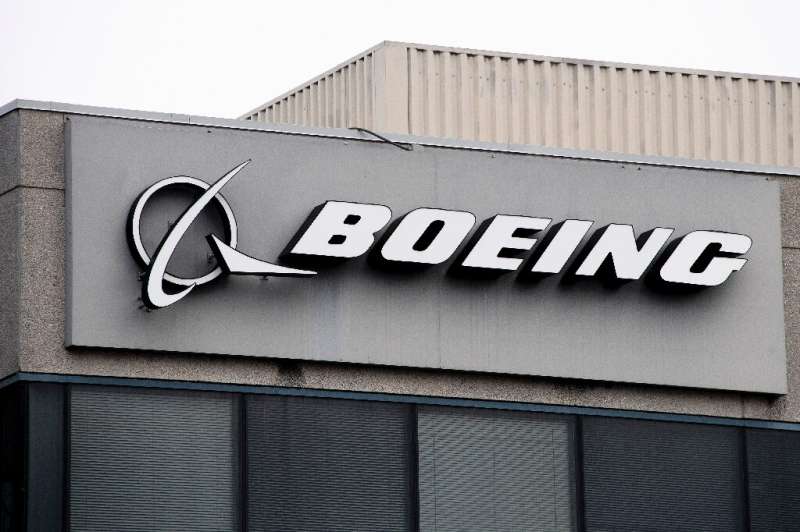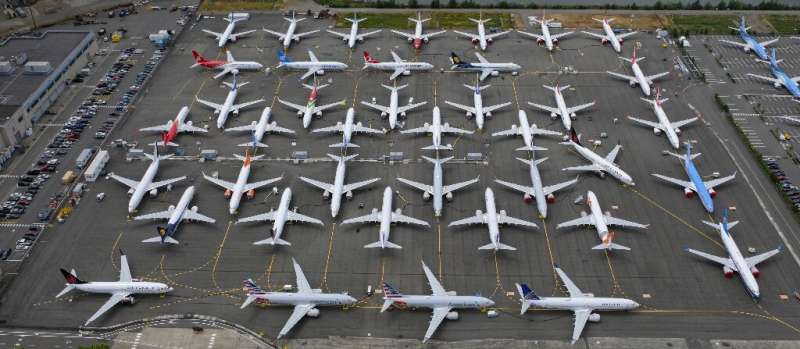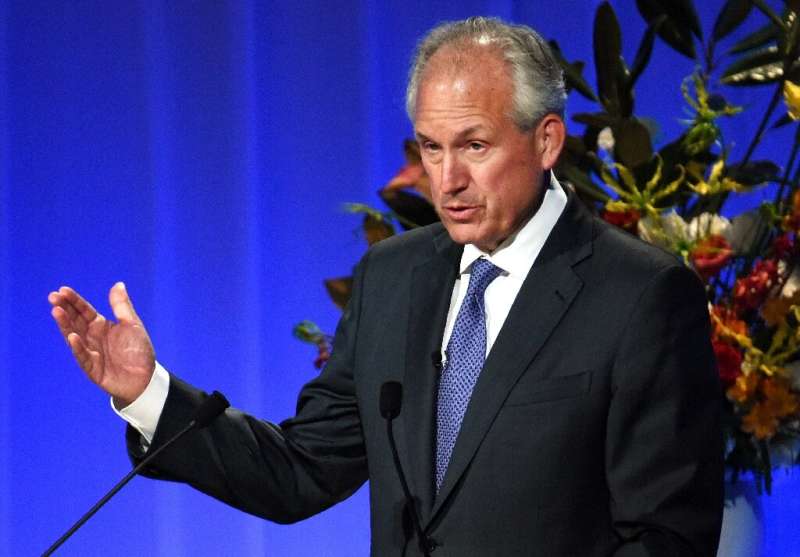Behind the MAX crisis: Lax regulator, top-down company culture

Even before the Lion Air and Ethiopian Airlines crashes claimed 346 lives, Boeing flight tests had revealed problems similar to those encountered by pilots on the ill-fated 737 MAX flights.
Company officials learned that its MCAS anti-stall system—which is at the center of both accidents—activated within minutes of takeoff, repeatedly pushing the nose of the aircraft down even when the plane was operating in normal conditions at lower speed.
This discovery, recounted to AFP by two former Boeing engineers who spoke on the condition of anonymity, suggested that mastering the MCAS was important for safely flying the MAX.
The MCAS should have been closely vetted by regulators, and procedures for operating the system should have been included in plane manuals and highlighted during pilot training.
But none of that happened.
Before the Lion Air disaster in October, the MCAS was not even named in the official documents given to pilots.
In the earliest documents submitted to the Federal Aviation Administration, Boeing said the MCAS would only activate under abnormal conditions, such as a sudden turn at great speed.
Boeing later amended its documents to say MCAS could be activated at lower speeds, but maintained throughout that there were no significant safety changes compared with earlier models.
FAA representatives were present during a test flight when an MCAS problem occurred, according to a regulatory source, but approved the MAX without independently studying or testing the flight system.
Instead, regulators deferred on key aspects of certification to Boeing, allowed under a congressionally-mandated program begun in 2005 while the FAA faced budget pressure.
In essence, Boeing chose the engineers who would inspect its planes in a process rubber-stamped by the agency.

Not grounded after 1st crash
The FAA had assessed the MAX as safe, and the plane lacked the degree of alterations from its predecessor, the NG, that would require significant additional pilot training.
Yet the MCAS, short for the Maneuvering Characteristics Augmentation System, was added to the MAX, a more fuel-efficient model with a heavier engine and different aerodynamics.
But following the Lion Air crash on October 28, 2018, the FAA acknowledged it lacked full understanding of the MCAS, a government source told AFP.
The agency did not realize it could be difficult for a pilot to regain control of the plane once MCAS was activated.
Instead of grounding the plane, the FAA on November 7 issued an "emergency" airworthiness order for MAX operators, calling for new procedures for pilots encountering the problem with MCAS.
The agency also directed Boeing to correct the MCAS problem, while planes continued to fly, and that effort was still underway when the Ethiopian flight crashed five months later.
"The 737 MAX certification program involved 110,000 hours of work on the part of FAA personnel, including flying or supporting 297 test flights," an agency spokesman said.
But amid renewed public scrutiny, including into the relationship between the FAA and Boeing, the timeline for returning the MAX to the skies remains cloudy. Boeing has threatened to halt production of the plane, putting thousands of jobs at risk while numerous probes investigate the MAX certification.
Changes?
Boeing was under pressure when it began developing the MAX in 2011.

Airbus had sprinted ahead of Boeing in the race for new single-aisle planes, a lucrative market, with its A320 Neo, while Boeing was hitting hurdles with other ventures, including the 787, which was running behind schedule.
"They wanted us to control costs," said an engineer, who described tensions between technical and managerial staff.
"Everything was designed to stop an ability to communicate concerns upward," said another engineer.
"Delivering bad news was generally regarded as a very bad career move," said Richard Aboulafia, a longtime industry analyst at the Teal Group, an aerospace market analysis firm, who described former Boeing chief executive Jim McNerney as obsessed with share price.
During McNerney's tenure, Boeing shares more than doubled.
"We did not cut corners or push the 737 MAX out before it was ready. Safety is always the first priority," Boeing said.
But Arthur Wheaton, a professor at the Worker Institute at Cornell University in New York specializing in labor relations, said, "Boeing culture is to not value the employees but to try put more (of) the power ... on the managers to get the work done for a price, as opposed to the effectiveness."
The company did finally apologize—albeit 25 days after the Ethiopian accident.
"I don't even recall Boeing apologizing for an accident involving one of their planes before now; so I would say this is a change from the past," said Scott Hamilton, managing director at Leeham, a market intelligence firm.
"We know we fell short in some areas, including in communication with pilots, regulators and customers. We're going to make improvements and we own that," Boeing said.
The FAA, meanwhile, said it welcomes ongoing reviews of its performance and "will incorporate any changes that would improve our certification activities."
© 2019 AFP





















